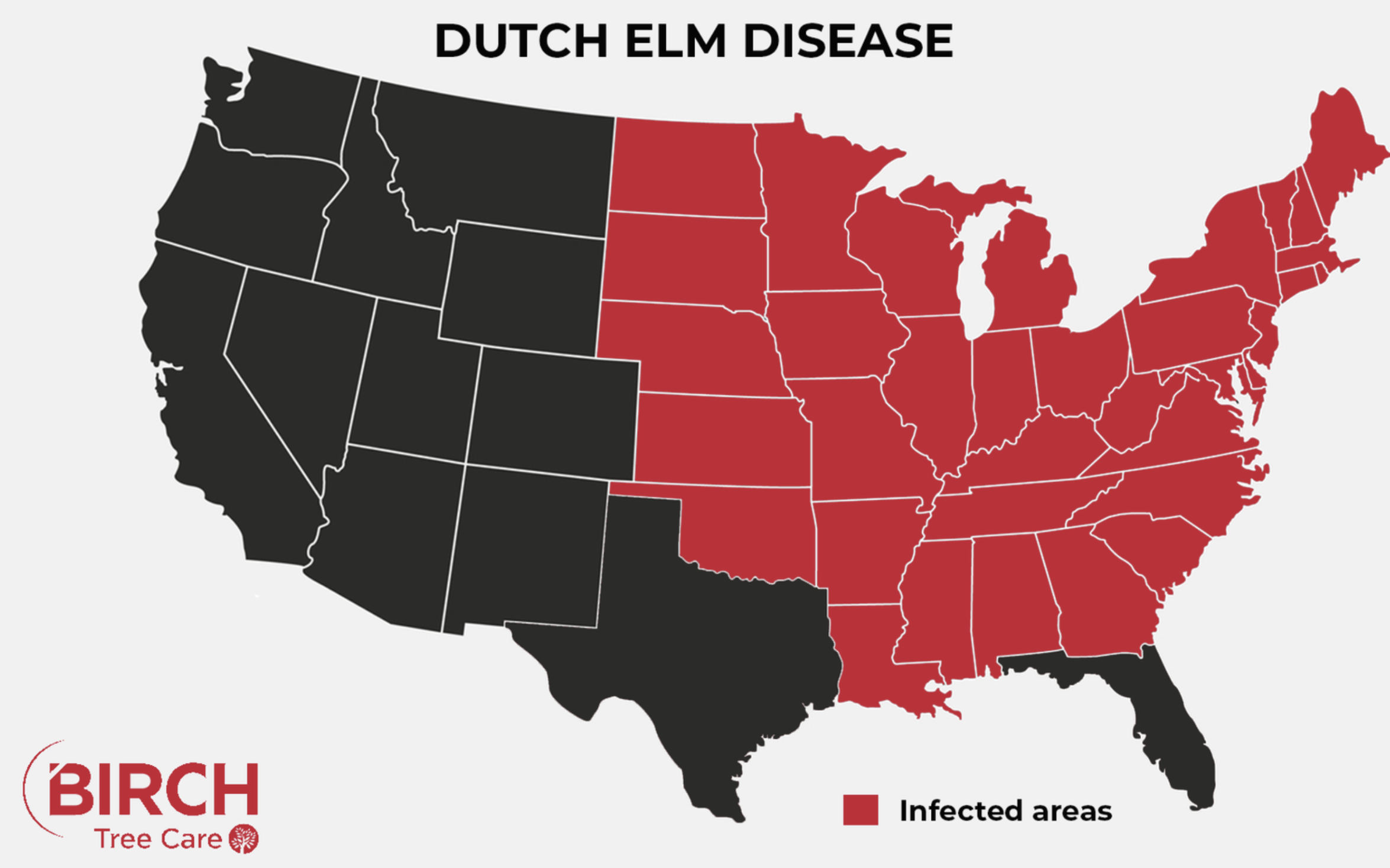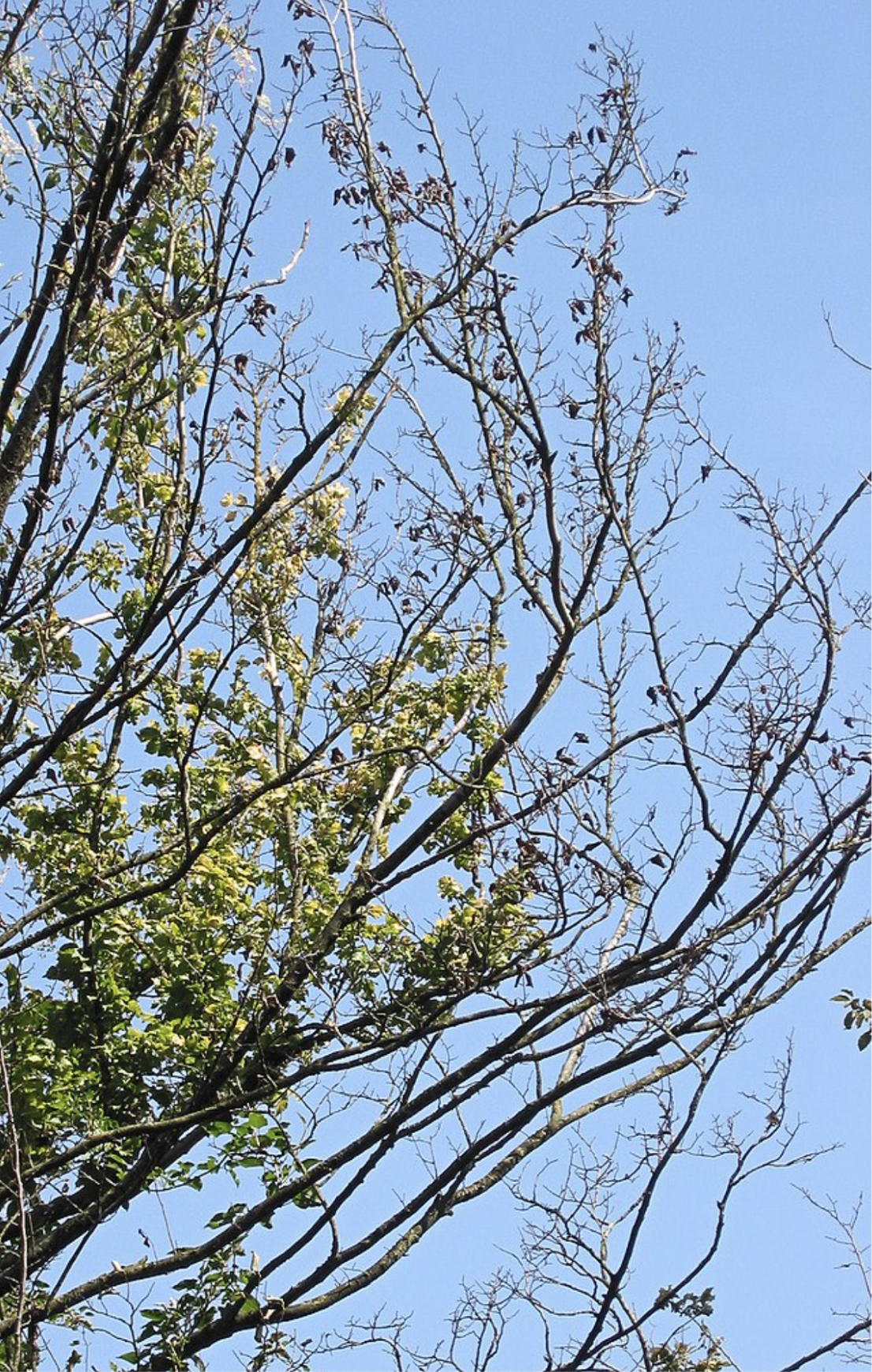Dutch Elm Disease in Minnesota: How to Identify, Treat & Prevent It
Dutch Elm Disease (DED) is one of the most destructive tree diseases in North America — and unfortunately, Minnesota has been hit hard since it first appeared here in the summer of 1961. Sometimes called elm tree disease or elm tree fungus, DED can quickly spread through entire neighborhoods, killing mature trees within a single season if left untreated.
In this guide, we’ll cover:
What Dutch Elm Disease is and how it spreads
The key symptoms to watch for
Treatment options for infected trees
Best prevention methods to protect your elms
Frequently asked questions about Dutch Elm Disease
What Is Dutch Elm Disease?
Dutch Elm Disease is caused by the Ophiostoma fungus, which invades the tree’s vascular system and blocks water movement. It spreads in two main ways:
By Elm bark beetles – These beetles carry the fungus from infected trees to healthy ones.
Through root grafts – The roots of nearby elm trees can naturally fuse together underground, allowing the fungus to spread from one tree to another.
Without proper care, DED can cause a once-healthy tree to wilt, brown, and die in a matter of months.
Dutch Elm Disease Symptoms
Catching DED early can make the difference between saving a tree and losing it. Watch for these signs:
Yellowing leaves that later turn brown
Wilting of leaves on one or more branches (often starting at the top)
Brown streaking in the sapwood underneath the bark
Branches turning dull green/yellow
Dry, brittle branches that break easily
Pro Tip: Infected branches often show symptoms in summer, but the fungus may already be in the tree months before you notice visible damage.
How to Treat Dutch Elm Disease
While DED is serious, it’s not always a death sentence for your tree — if caught early and treated by a certified arborist. At Birch Tree Care, our process includes:
Isolate the affected area
Identify branches with wilting or yellow discoloration. Use precise cuts to examine the wood and locate infection points.Remove infected branches
Prune back to healthy wood at the branch collar where it meets the trunk. All infected material should be destroyed — never keep elm wood as firewood.Trace the damaged area
Strip infected bark using a chainsaw to expose the fungus to air and slow its spread.Apply preventative treatments
Use approved fungicidal injections to protect the tree from future infections.
How to Prevent Dutch Elm Disease
Prevention is always easier than treatment. Here’s how to protect your elms:
Schedule regular tree inspections – Annual checkups by a certified arborist can catch early signs.
Fungicidal injections – Proactive treatments can protect trees for multiple seasons.
Sanitize pruning tools – Prevent transferring fungus between trees.
Remove dead or dying elms promptly – Eliminates breeding grounds for elm bark beetles.
Avoid pruning during beetle season – Typically April through July in Minnesota.
Dutch Elm Disease FAQs
-
If caught early, some trees can be saved through pruning and fungicide injections, but severely infected trees often cannot be cured.
-
It can take as little as one season for a mature elm to die once infected.
-
Yes — some hybrid and American Elm cultivars are bred for resistance, but no tree is completely immune.
-
Yes. Prompt removal prevents beetles from spreading the fungus to nearby trees.
-
Late fall through early spring is safest, when beetles are inactive.
Areas We Offer Dutch Elm Disease Treatment
Birch Tree Care is your local residential and commercial tree care company providing plant health care services to the Twin Cities area of Minneapolis and St. Paul.
At Birch Tree Care, we'll treat your trees as if they were our own. Our team of certified arborists care deeply about trees and work safely and efficiently to come up with a treatment plan that is best suited to your plant's needs.
If you're looking to get Dutch Elm treated, call us at 651-504-0533 for more information on our service options in your neighborhood.
Dutch Elm Disease Treatment Customer Reviews
“This company is one of the most professional companies I have ever worked with. They were prompt, courteous, efficient, and experts in their field. Birch Tree Care took care of EVERYTHING! No hassle, no headaches! You get what you pay for and these guys are absolutely worth every penny!” - Laura Sykes
“We have used Birch Tree Care for several years and have always been pleased with the prompt and professional service. We were impressed with the skill of the climbing specialists, the excellent work, and the site cleanup afterward. These folks really care about trees!” - Shari Crowe
Protect Your Elm Trees Today, Call Birch Tree Care
Dutch Elm Disease has changed Minnesota’s tree canopy forever — but with early detection and proactive care, you can protect the elms on your property.
📞 Contact Birch Tree Care today at 651-317-4080 to schedule an inspection or treatment. Our certified arborists serve Minneapolis, St. Paul, and surrounding Twin Cities communities with expert care.



